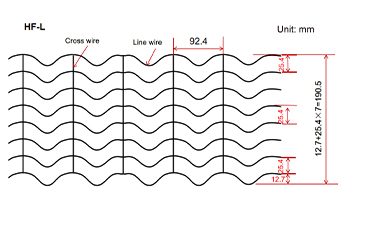- Industrial zone, South of Anping Town, Hengshui, Hebei, China.
- sales@hfpetromesh.com
- +86-18931809706
stainless steel bar grating price
Understanding the Pricing of Stainless Steel Bar Grating
Stainless steel bar grating is widely recognized for its durability, strength, and resistance to corrosion, making it an ideal choice for various industrial and commercial applications. However, when considering the purchase of stainless steel bar grating, one crucial aspect that potential buyers often focus on is pricing. Understanding the factors influencing the price can help in making informed purchasing decisions.
Firstly, the price of stainless steel bar grating primarily depends on the type of stainless steel used. There are different grades available, such as 304 and 316 stainless steel, each offering varying levels of corrosion resistance and strength. Grade 304 is commonly used due to its affordability and suitability for many applications, while Grade 316, which contains molybdenum, provides enhanced corrosion resistance, particularly in marine environments. This additional resilience often comes at a higher price point, reflecting the material's enhanced properties.
Another critical factor influencing price is the size and thickness of the grating. Standard sizes may come at a lower rate due to mass production, while custom sizes or thicker options generally incur additional costs. The configuration of the grating—whether it is light-duty, medium-duty, or heavy-duty—can also impact pricing, as heavier gratings require more raw materials and manufacturing efforts.
stainless steel bar grating price

The manufacturing process adds another layer to the cost equation. Stainless steel bar grating can be produced through various methods, including welded, swaged, or pressure-locked techniques. Each of these methods has unique advantages and can influence the final price. For instance, welded grating tends to be more cost-effective, while swaged grating often offers superior strength and a more refined aesthetic at a higher price.
Transportation and delivery costs can further affect the final price of stainless steel bar grating
. Depending on the distance from the manufacturing facility to the end location, shipping costs can vary; thus, it’s essential to consider these logistics when comparing prices from different suppliers.Lastly, market conditions and fluctuations in raw material prices can also impact the cost of stainless steel bar grating. Periodically, the prices of steel and stainless steel components fluctuate due to supply and demand dynamics, which can trickle down to consumers.
In summary, when evaluating stainless steel bar grating prices, it is essential to consider the type of steel, size and thickness requirements, manufacturing processes, transportation costs, and market conditions. By understanding these factors, buyers can make more informed choices and find products that meet their needs and budget.
-
The Power of Pyramid Shaker Screen - A 3-Dimensional SolutionNewsOct.24,2024
-
Exploring the Versatility and Durability of Steel GratingNewsOct.24,2024
-
Revolutionizing Drilling Efficiency with Steel Frame Shaker Screens for Mud Shale ShakersNewsOct.24,2024
-
Potential of Shale Shaker ScreensNewsOct.24,2024
-
Offshore Pipeline Counterweight Welded Mesh - Reinforced Mesh in Marine EngineeringNewsOct.24,2024
-
Revolutionizing Offshore Pipeline Stability with Concrete Weight Coating MeshNewsOct.24,2024
